All of America’s greatest military leaders have certain qualities in common. Integrity, courage, decisiveness, and common sense are just some of the traits of these successful leaders. On the battlefield, the loyalty and dedication of commanders who have earned the trust of their troops can change the course of history.
Studying the lives of World War II’s most famous U.S. generals helps us understand how all these qualities and characteristics come into play. These individuals exhibited remarkable self-discipline and work ethic, while motivating those around them to strive for excellence every day.
This list of America’s most famous World War II generals was based on information sourced from Britannica and United States Army Military History Center. Many of the generals named on our list are considered among the greatest generals in American history.
Among the top 20 distinguished American World War II generals, two were awarded the Medal of Honor, the highest U.S. military decoration, and seven were honored with the Purple Heart, which recognizes injuries sustained in battle. One of these generals was an orphan from Brooklyn who was inspired to join the military by reading school books about the Civil War.
Some of the other commanders on the list include General Claire Lee Chennault from Texas and General Carl Spaatz from Pennsylvania. Chennault faced numerous rejections from flight school, but hit the books with dogged determination to earn his wings, then went on to become a trailblazer in air-combat tactics. Despite personal convictions about nuclear weaponry, Spaatz faithfully led the operations that deployed atomic bombs on Nagasaki and Hiroshima.
Oklahoma’s General Lucian Truscott made a remarkable transition from high school principal to the military and embodied the same inspiring confidence and determination of his mentor, General George S. Patton. There’s also the formidable General Joseph Stillwell, from Florida, who spoke fluent Mandarin and led the unofficial “third theater” of the war in China-Burma-India.
Despite their diverse backgrounds and distinctly different skill sets, all of these men demonstrated exceptional leadership qualities on and off the battlefield. (Here is a list of 40 of America’s most decorated war heroes.)
These are America’s most famous WWII generals:
Alexander McCarrell Patch (1889-1945)
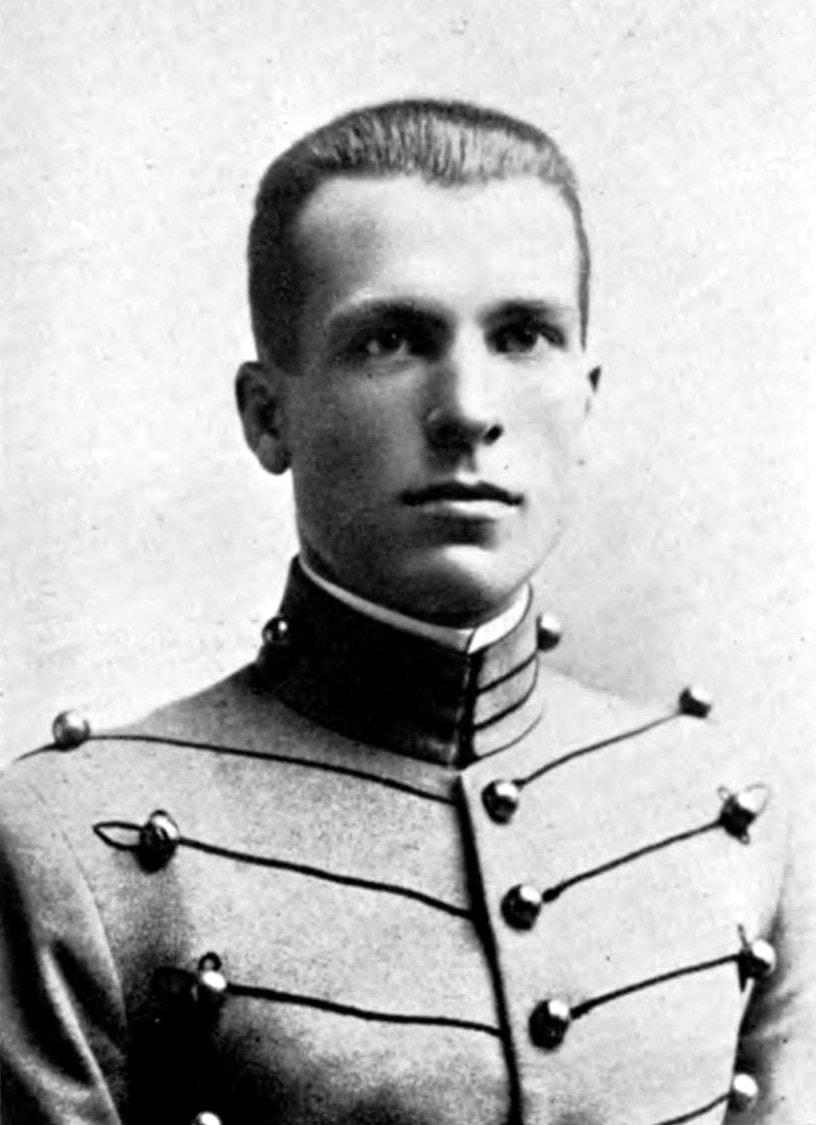
- Medals and/or stars: Army Distinguished Service Medal, Navy Distinguished Service Medal, Bronze Star/Lieutenant General/Three Stars
Patch was one of the earliest American soldiers to be trained in machine gunnery and played a pivotal role in developing combat mechanization. He was one of a few U.S. commanders that fought in both the Pacific and Europe. He led troops at Guadalcanal and later commanded the Seventh Army’s invasion of southern France, famously called the “Second D-Day,” due to its timing being shortly after the Invasion of Normandy. Patch died in 1945 and was posthumously promoted to the rank of general in 1954.
Carl Spaatz (1891-1974)
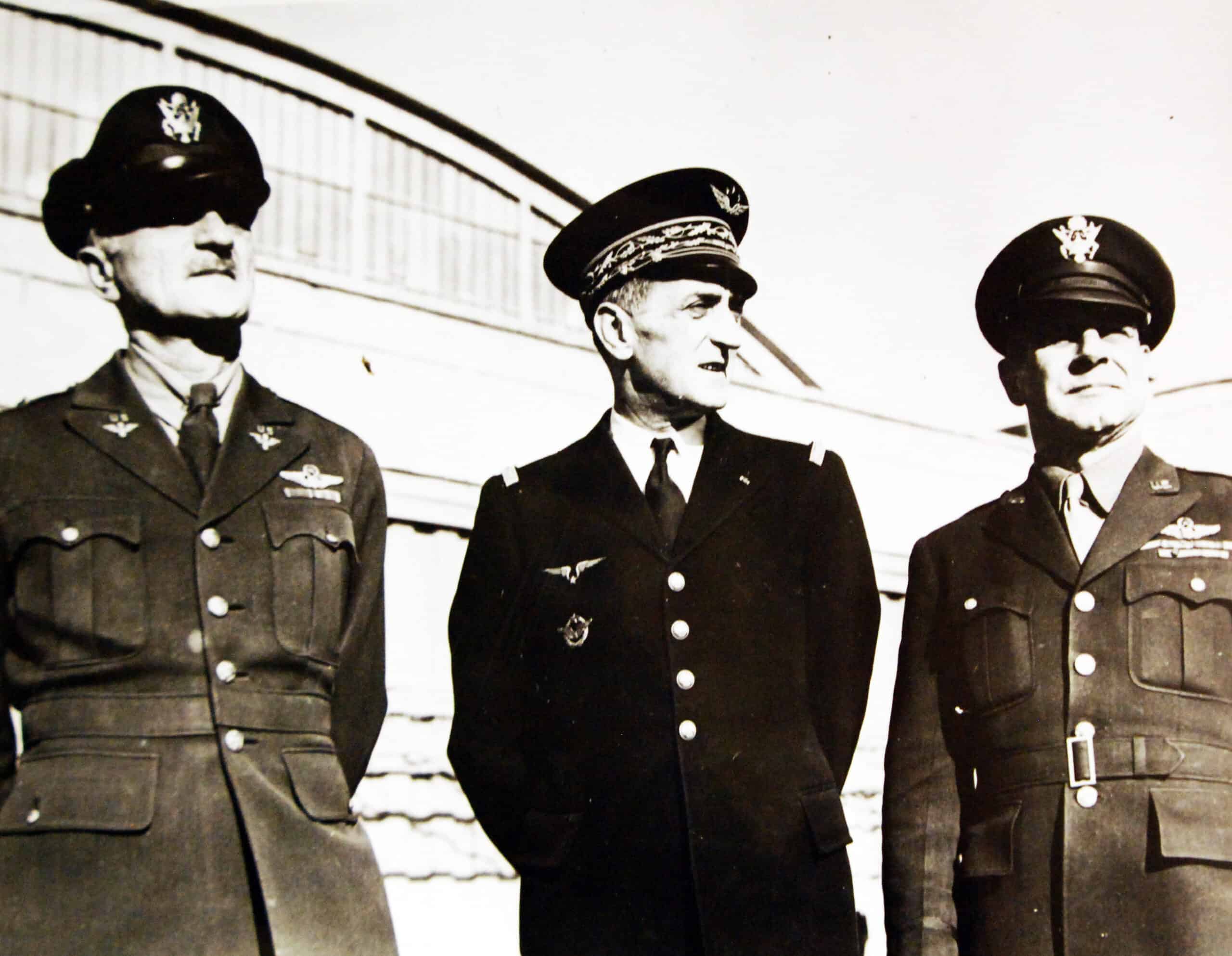
- Medals and/or stars: Distinguished Service Cross, Army Distinguished Service Medal, Bronze Star/General/Four Stars
Carl Spaatz is recognized as the American commander responsible for overseeing the strategic bombing campaigns targeting Japanese cities. Despite his personal opposition to nuclear weapons, he authorized the 1945 deployment of atomic bombs on Hiroshima and Nagasaki. Spaatz served as a combat pilot in World War I and later became the first chief of staff of the newly established U.S. Air Force following World War II. Spaatz’s military career included the orchestration of air assaults in North Africa and Italy. By January 1944, he commanded the U.S. Strategic Air Forces in Europe, orchestrating precision bombings targeting Germany’s aircraft and fuel factories.
Claire Lee Chennault (1890-1958)
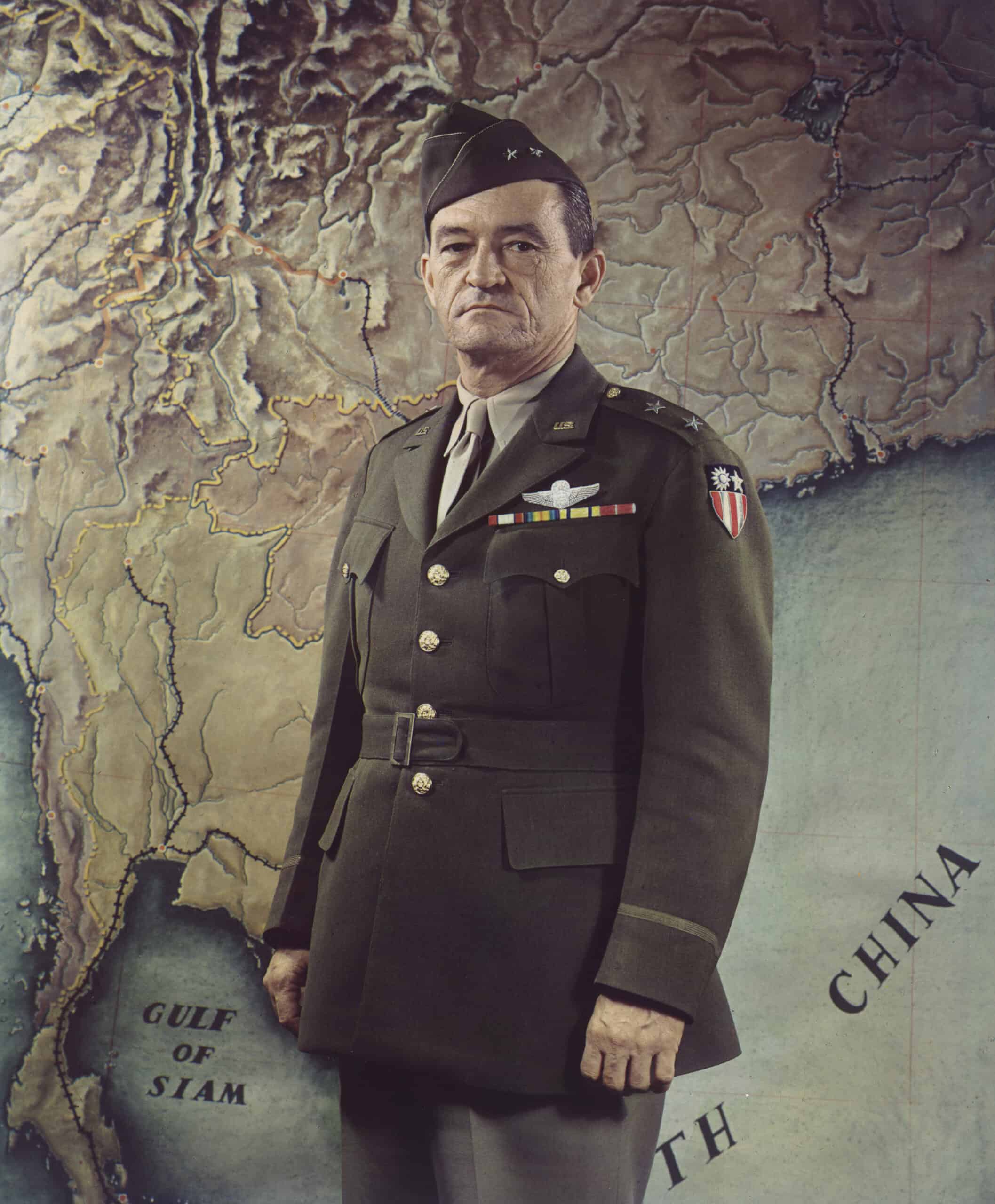
General Claire Chennault
- Medals and/or stars: Army Distinguished Service Medal, Distinguished Flying Cross/Lieutenant General/Three Stars
After enlisting in World War I and despite facing numerous rejections for flight training, Chennault eventually earned his wings. He retired from the military in 1937 due to health reasons, but traveled to China where he served as an advisor to Generalissimo Chiang Kai-shek. He later recruited volunteer U.S. pilots to establish the American Volunteer Group (AVG), famously know as the Flying Tigers. These pilots flew P-40B fighters that featured tiger shark’s teeth and eyes painted on their noses. The AVG and the British RAF played a pivotal role in halting Japan’s westward advance through Burma and Rangoon. Following the war, Chennault emerged as a prominent advocate against the spread of Communism in the Far East.
Douglas MacArthur (1880-1964)
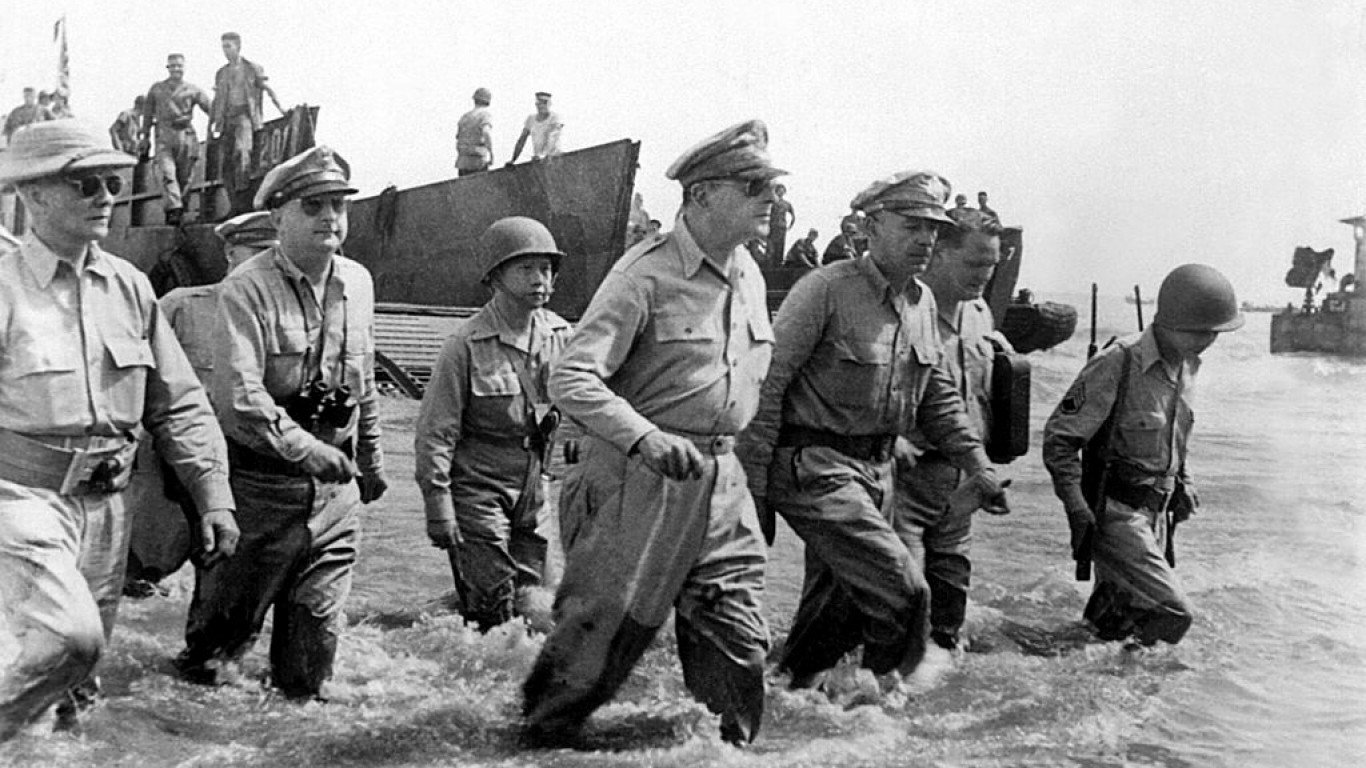
- Medals and/or stars: Medal of Honor, the French Légion d’honneur and Croix de guerre, the Order of the Crown of Italy/General of the Army/Five Stars
Douglas MacArthur was deeply influenced by his father, Arthur MacArthur Jr., a highly decorated lieutenant-general who served in every U.S. war from the Civil War to the Philippine-American War. Douglas first met George S. Patton during World War I, as a fellow commander known for having a fearless demeanor. Their shared sense of self-assurance was bolstered by their successful command during World War II, with Patton directing tanks in Europe and Macarthur leading his soldiers from island to island in the Pacific. MacArthur is one of only two generals on this list to have received the Medal of Honor, the highest U.S. military decoration.
Dwight D. Eisenhower (1890-1969)

- Medals and/or stars: Army Distinguished Service Medal, European-African-Middle Eastern Campaign Medal, National Defense Service Medal/General of the Army/Five Stars
Eisenhower started his military career as a novice second lieutenant in 1915. He was so eager for combat that he repeatedly applied for deployment to Europe during the World War I, resulting in reprimand from his superiors. Instead, his commanders assigned him to oversee Camp Colt in Pennsylvania, the inaugural U.S. tank-training facility. With America’s entry into World War II, Eisenhower assumed pivotal roles in war planning, including spearheading the Allied invasion of Europe. Eisenhower’s military success came from his outstanding organizational and strategy skills, and ability to foster optimism and confidence among colleagues and subordinates. These qualities, along with his war-hero status, would later help him become the 34th president of the United States.
George C. Marshall (1880-1959)
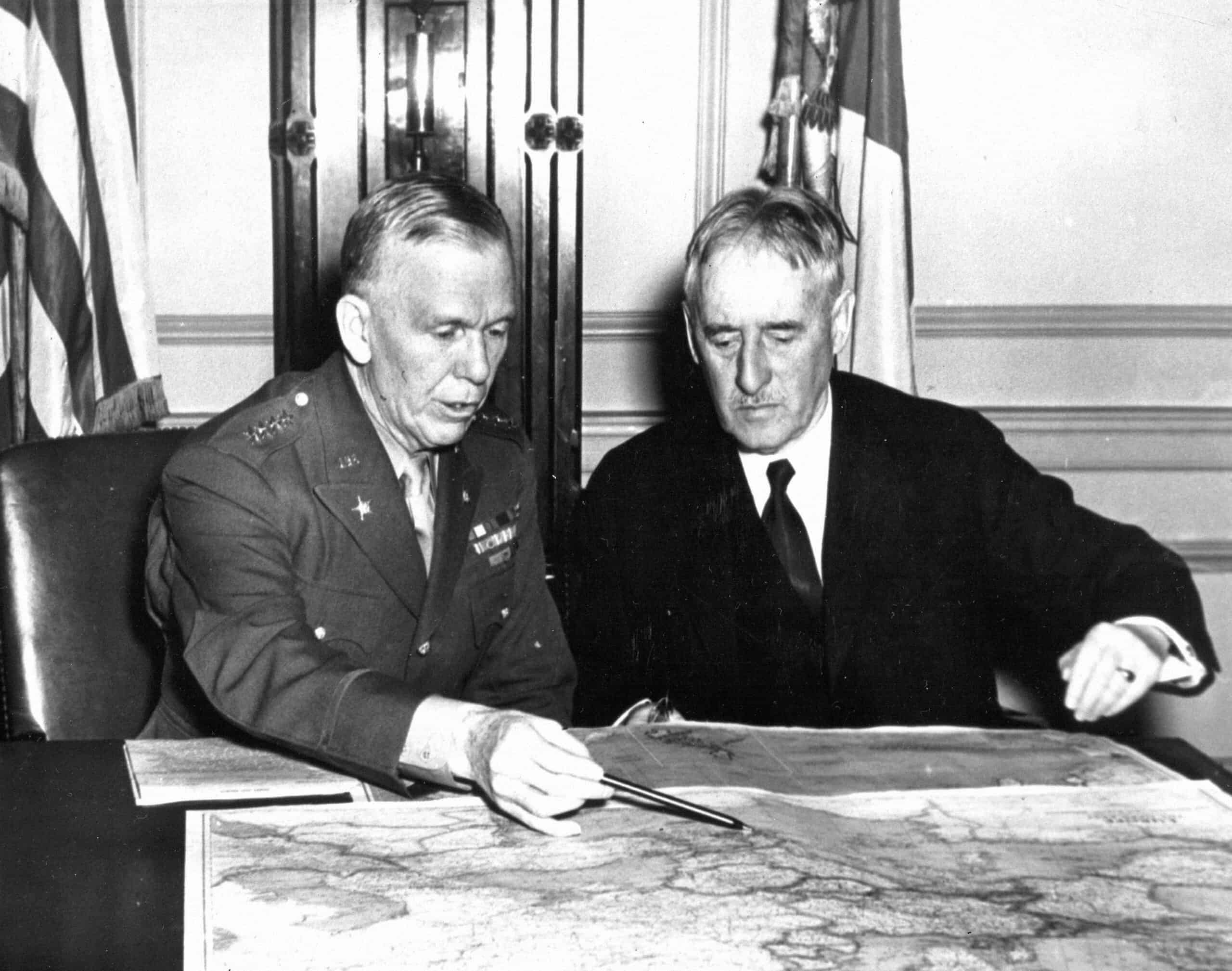
Compressed by jpeg-recompress
- Medals and/or stars: Army Distinguished Service Medal, Silver Star, Croix de Guerre/General of the Army/Five Stars
Marshall is one of the five generals on this list to achieve the rank of five stars. After graduation from the Virginia Military Institute, he began his career serving as a second lieutenant in the 30th Infantry Regiment in the Philippines. Later, as assistant chief of staff of the 1st Infantry Division during World War I, he won recognition for his planning of the Battle of Cantigny. By World War II, Marshall was chief of staff, overseeing the largest military expansion in US history. He commanded U.S. war efforts from 1941 to 1945 after which he was named secretary of state. The Marshall Plan, a substantial U.S. foreign aid iniative aimed at helping Europe rebuild after the war, is named after him.
George S. Patton (1885-1945)
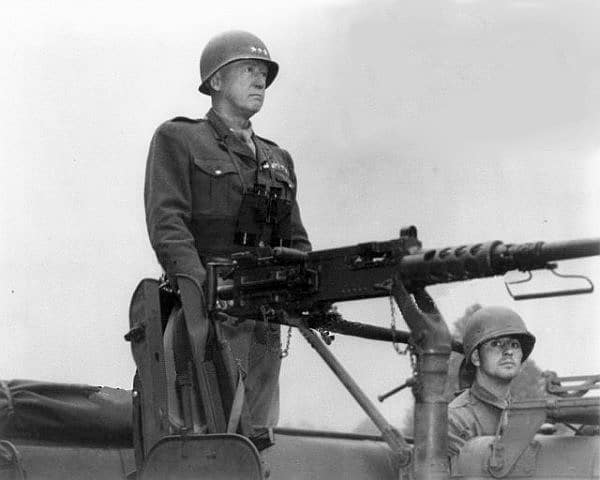
- Medals and/or stars: Distinguished Service Cross, Silver Star, Bronze Star, Purple Heart/General/Four Stars
Known by the nickname “Old Blood and Guts,” Patton was one of the toughest generals of World War II and was among the select group of six generals on this list to earn a Purple Heart, awarded to him for his sustaining injuries while leading a tank assault on German machine gunners during World War I. His military career began with intense combat with Mexican revolutionary Pancho Villa and his followers. He then became the first officer in the newly established U.S. Army Tank Corps. Patton’s illustrious career included leading the Seventh Army in the invasion of Sicily in 1943, commanding the Third Army across northern France, and playing a critical role in the decisive victory at the Battle of the Bulge.
Henry “Hap” Arnold (1886-1950)
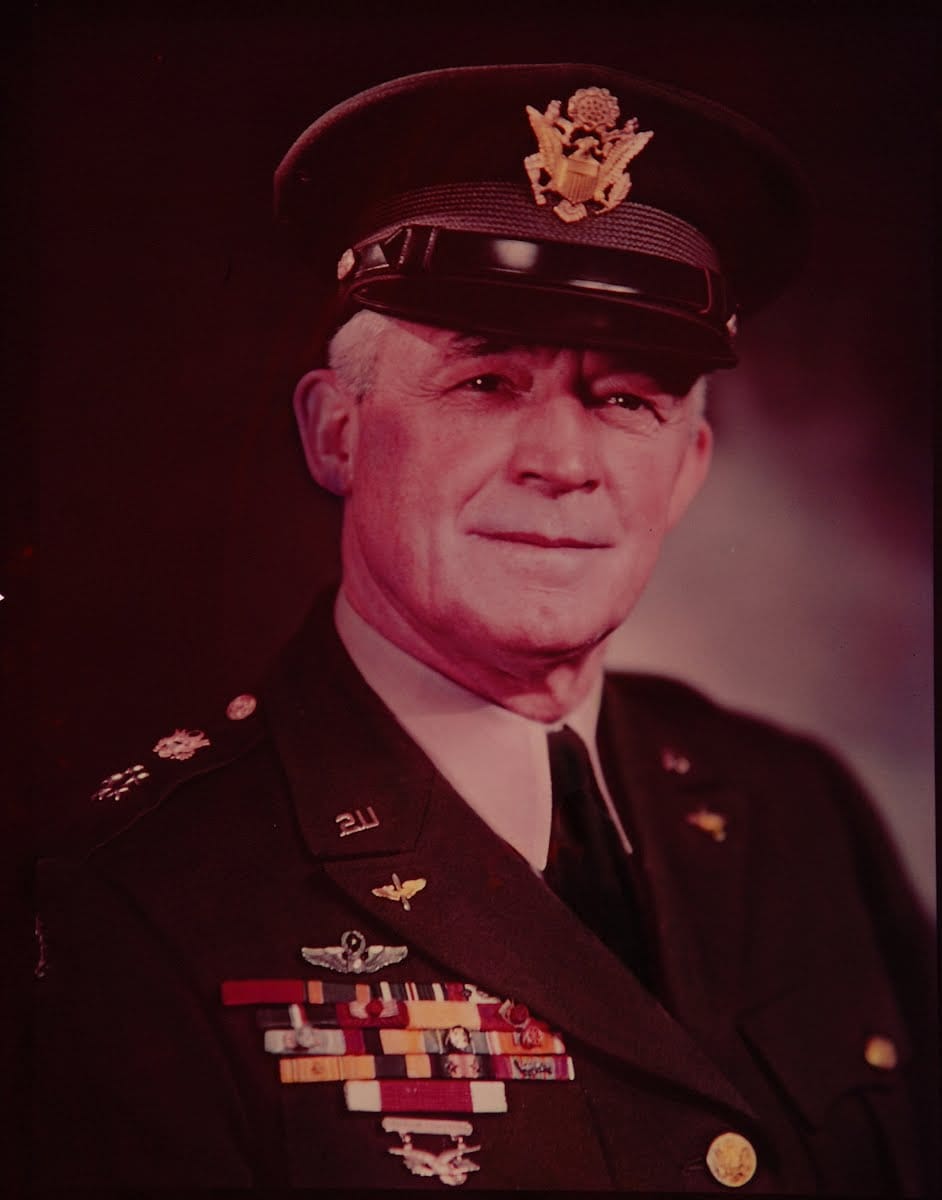
- Medals and/or stars: Army Distinguished Service Medal, Distinguished Flying Cross/General of the Army/Five Stars
After Hap Arnold graduated from West Point, he received flight training from the Wright Brothers. In 1912, he set a new altitude record by piloting a glider-like Burgess-Wright plane to 6,540 feet. As a pioneering military aviator, Arnold played a crucial role in advancing U.S. air power, notably contributing to the development of the B-17 Flying Fortress and the B-24 Liberator. By the onset of World War II, Arnold was heading the Army Air Corps and earned his fifth star. Following the war, he became General of the Air Force, distinguishing him as the only five-star general to hold that rank in two separate armed services.
Ira Clarence Eaker (1896-1987)
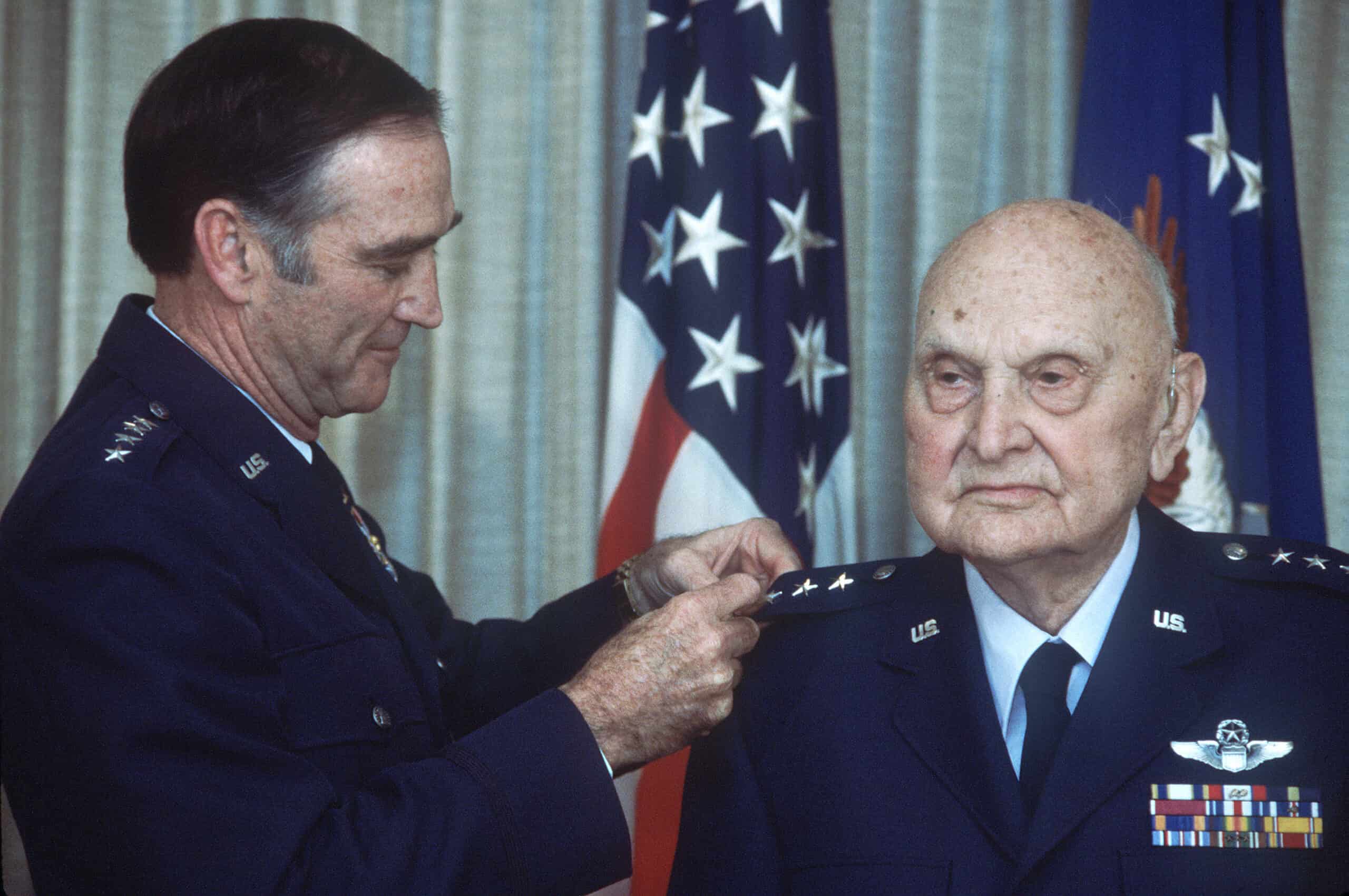
General (GEN) Charles A. Gabriel, chief of staff, US Air Force, pins a fourth star on retired GEN Ira C. Eaker, an aviation pioneer, during a ceremony at the Pentagon.
- Medals and/or stars: Air Force Distinguished Service Medal, Army Distinguished Service Medal, Navy Distinguished Service Medal, Silver Star,Lieutenant General/Three Stars
Following his service in the Philippines, Eaker returned to the U.S. in 1924 to assume a role in the Office of Air Service in Washington D.C. In 1927 he piloted the Pan American Flight goodwill mission in South Americas. After the U.S. entered World War II, Eaker was appointed as the commanding general of all American Army Air Forces in the U.K. Near the end of the war, Eaker served as commander-in-chief of the Mediterranean Allied Air Forces. He was awarded with his fourth star, for his contributions to U.S. aviation and national security, nearly 40 years after he retired .
James Harold Doolittle (1896-1993)

Jimmy Doolittle
- Medals and/or stars: Medal of Honor, Army Distinguished Service Medal, Distinguished Flying Cross, Bronze Star/Lieutenant General/Three Stars
James Doolittle was famous for leading a major air raid over Japan four months after the attack on Pearl Harbor, and he and Douglas MacArthur are the only generals on this list to earn the Medal of Honor, the nation’s highest military decoration. He’s also one of the rare U.S. generals to have aircraft testing and racing talents. He resigned from the Army Air Corps in 1930, but returned to service during World War II. He led a fleet bombers over Tokyo, Yokohama, and other major Japanese cities, before landing in China. That bombing run did little physical damage, but the raid boosted American morale and forced the Japanese to divert resources to fortify their air defenses.
James Lawton Collins (1882-1963)
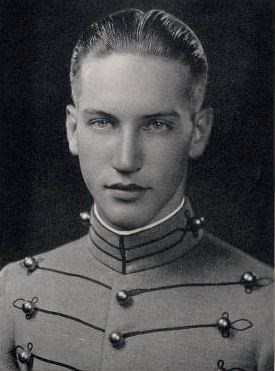
- Medals and/or stars: Army Distinguished Service Medal, Silver Star/General/Four Stars
James Collins was one of the prominent U.S. military officials to have served in both the Pacific and European theaters of war. By the beginning of World War II, the New Orleans native held the position of a temporary Army colonel, rising quickly through the ranks to serve as the youngest division commander in the army, entrusted with leading the 25th Infantry Division. He broke another age record when he was appointed commander of the VII Corps in the Allied invasion of Normandy a year later.
James Maurice Gavin (1907-1990)
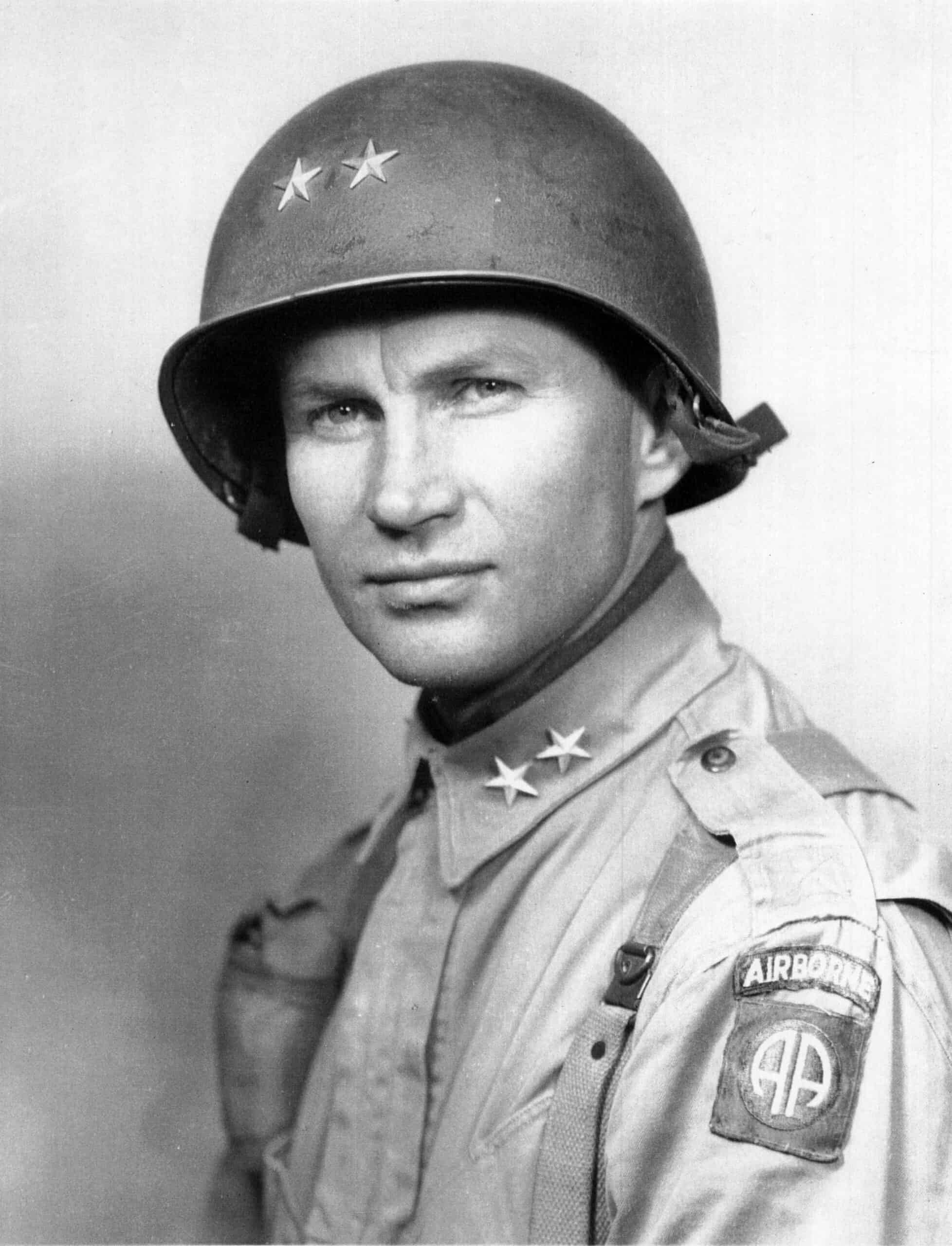
- Medals and/or stars: Distinguished Service Cross, Silver Star, Bronze Star, Purple Heart/Major General/Two Stars
James Gavin is one of two famous World War II generals born after 1900. He was inspired to join the military by books he read about the Civil War in elementary school. In 1924, 17 year old Gavin took a train to New York City and enlisted, and eventually made his way to West Point. As an adult, Gavin became a major promoter and innovator in boosting the effectiveness of airborne troops. Additionally, he is credited with the successful integration of soldiers from the all-Black 555th Parachute Infantry Battalion into the 82nd Airborne Division shortly after the war.
Joseph Stillwell (1883-1946)

- Medals and/or stars: Distinguished Service Cross, Army Distinguished Service Medal, Bronze Star/General/Four Stars
General Stillwell earned the nickname “Vinegar Joe” when he taught at the Infantry School at Fort Benning in Georgia because of his surly personality. He was also notorious for inventing his own unflattering nicknames such as calling Franklin D. Roosevelt, “Rubber Legs,” because of his disability. During World War II, he assumed the role of Generalissimo Chiang Kai-shek’s chief of staff, due to his fluency in Mandarin. He commanded the Allies unofficial “third theater” in China-Burma-India, putting him on par with General MacArthur in the Pacific and General Eisenhower in Europe in terms of command level.
Lucian Truscott (1895-1965)
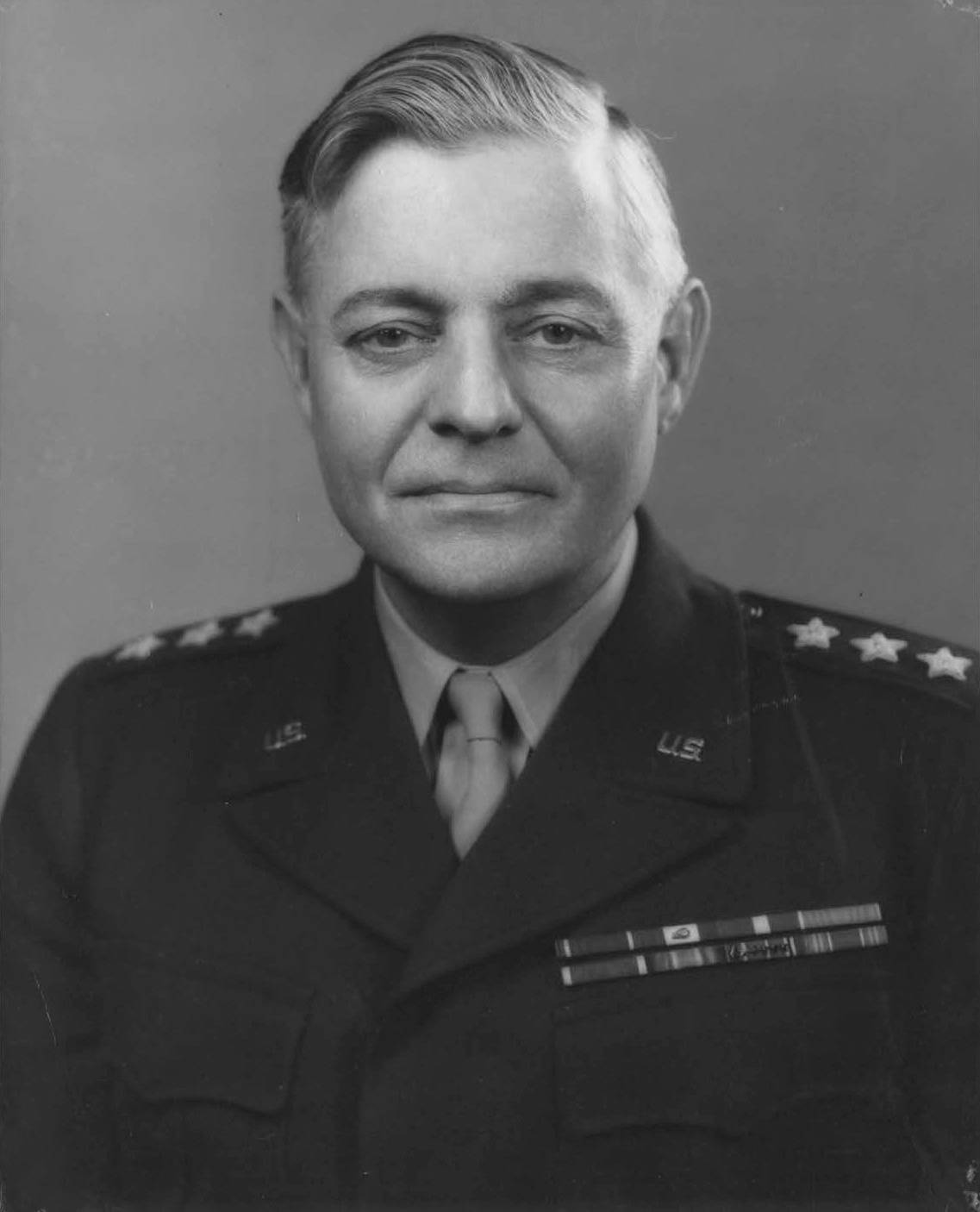
- Medals and/or stars: Distinguished Service Cross, Army Distinguished Service Medal, Navy Distinguished Service Medal, Purple Heart/General/Four Stars
General Truscott was a great battlefield commander. He had the courage, tenacity, and tactical competence to lead troops into combat, which was particularly evident during the challenging beach landings and crossing of mountainous terrains of Sicily and the Italian coast. Dwight Eisenhower regarded Truscott as the war’s second most able army commander, surpassed only by Patton. In fact, both men were very similar, demonstrating their finest leadership qualities when under enemy gunfire and they were both unafraid to challenge authority.
Mark W. Clark (1896-1984)
Captura 60MP Back Digital modelo 645 DF+
- Medals and/or stars: Distinguished Service Cross, Bronze Star, Purple HeartGeneral/Four Stars
After graduating from West Point, Mark Clark served in France during World War I, where he sustained injuries earning him a Purple Heart. During World War II, he was given the role of General Eisenhower’s deputy during the U.S. invasion of French North Africa in November 1942 and was later commissioned to train the Fifth Army for the invasion of Italy in 1943. Clark was credited with driving the Germans out of Rome. While commanding troops in Austria, he opposed the Soviets, criticizing what he saw as his country’s lenient stance towards communism. Throughout his life, Clark remained an outspoken anti-communist, echoing Joseph McCarthy’s concerns about the communist threat from within the United States.
Matthew B. Ridgway (1895-1993)
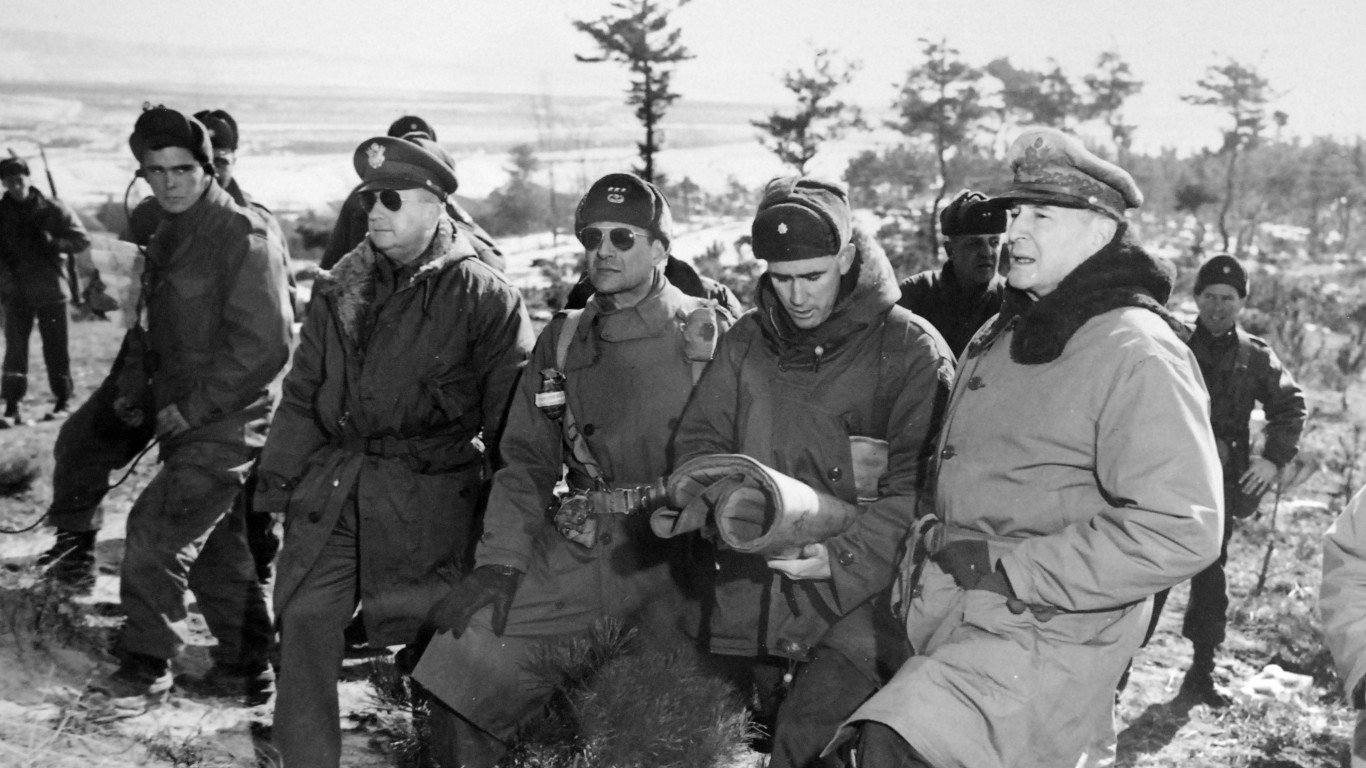
- Medals and/or stars: Distinguished Service Cross, Army Distinguished Service Medal,, Bronze Star, Purple Heart/Army Chief of Staff/Four Stars
Matthew Ridgway has been credited with converting the 82nd Infantry Division into the 82nd Airborne in 1942 and then using it to conduct airborne operations during the Sicily campaign, the first large-scale airborne assault in US military history. Ridgway was a brilliant planner and strategist who also participated in significant combat missions. He bravely parachuted into France with his troops during the Normandy Invasion, a dangerous but pivotal mission that scattered U.S. forces across Nazi-occupied northern France. After that, he led the XVIII Airborne Corps through the Netherlands, Belgium, and into Germany. Following the war, Ridgway assumed command of the Eighth Army during the Korean War, succeeding General MacArthur as Allied commander in the Far East, overseeing the withdrawal of American troops from Japan in 1952.
Maxwell D. Taylor (1901-1987)
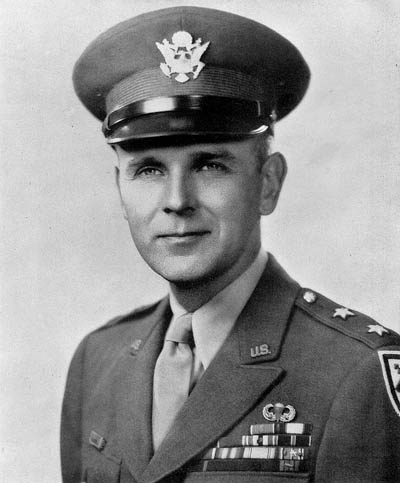
- Medals and/or stars: Distinguished Service Cross, Army Distinguished Service Medal, Silver Star, Purple Heart/General/Four Stars
Maxwell Taylor is known for his instrumental role alongside General Matthew Ridgway in establishing the 82nd Airborne Division early in World War II, and later assuming command of artillery during the Sicilian and Italian campaigns. Hours prior to the Allied invasion of Italy, Taylor took an incredible risk by clandestinely crossing enemy lines to meet with pro-Allied Italian leaders concerning a planned air assault on Rome. He also parachuted alongside his troops of the 101st Airborne Division during the Normandy invasion.
Omar Bradley (1893-1981)
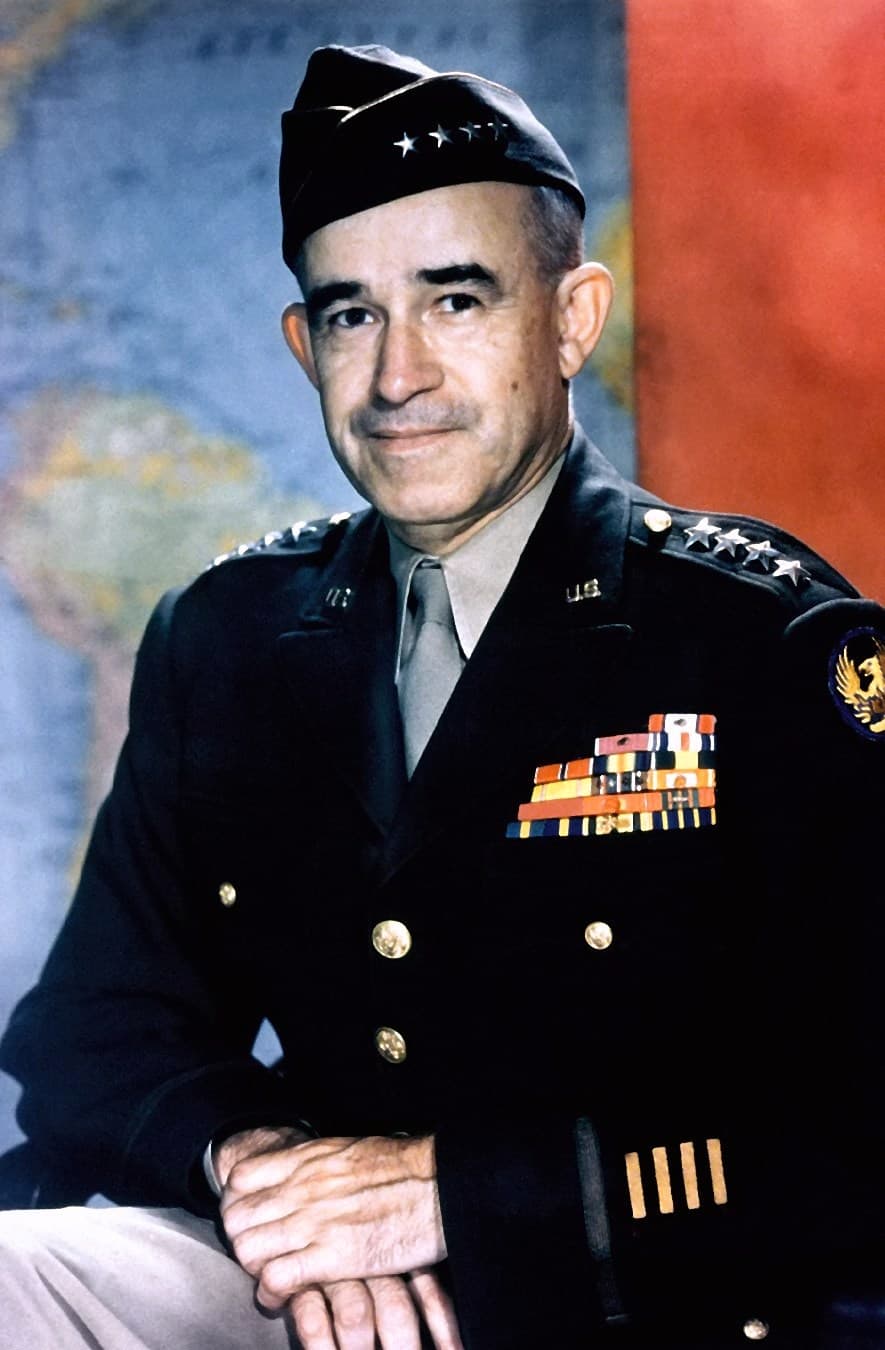
- Medals and/or stars: Distinguished Service Medal, Silver Star, Bronze Star, Purple Heart/General of the Army/Five Stars
Omar Bradley’s namesake, the Bradley series of tracked armored fighting vehicles, was used for troop transportation and reconnaissance. In 1943, Bradley became General Eisenhower’s representative during the North African campaign, leading the forces that broke through German lines in Tunisia to capture the port city of Bizerte. Following his promotion to lieutenant general, Bradley commanded troops in the invasion of Sicily and later led the First Army during the Normandy invasion. Under his leadership, his forces advanced through German-occupied France. By August 1944, Bradley was appointed to command the 12th army, which would eventually merge with other Army groups to form the largest contingent of U.S. fighters ever united under one commander.
Walter Bedell Smith (1895-1961)
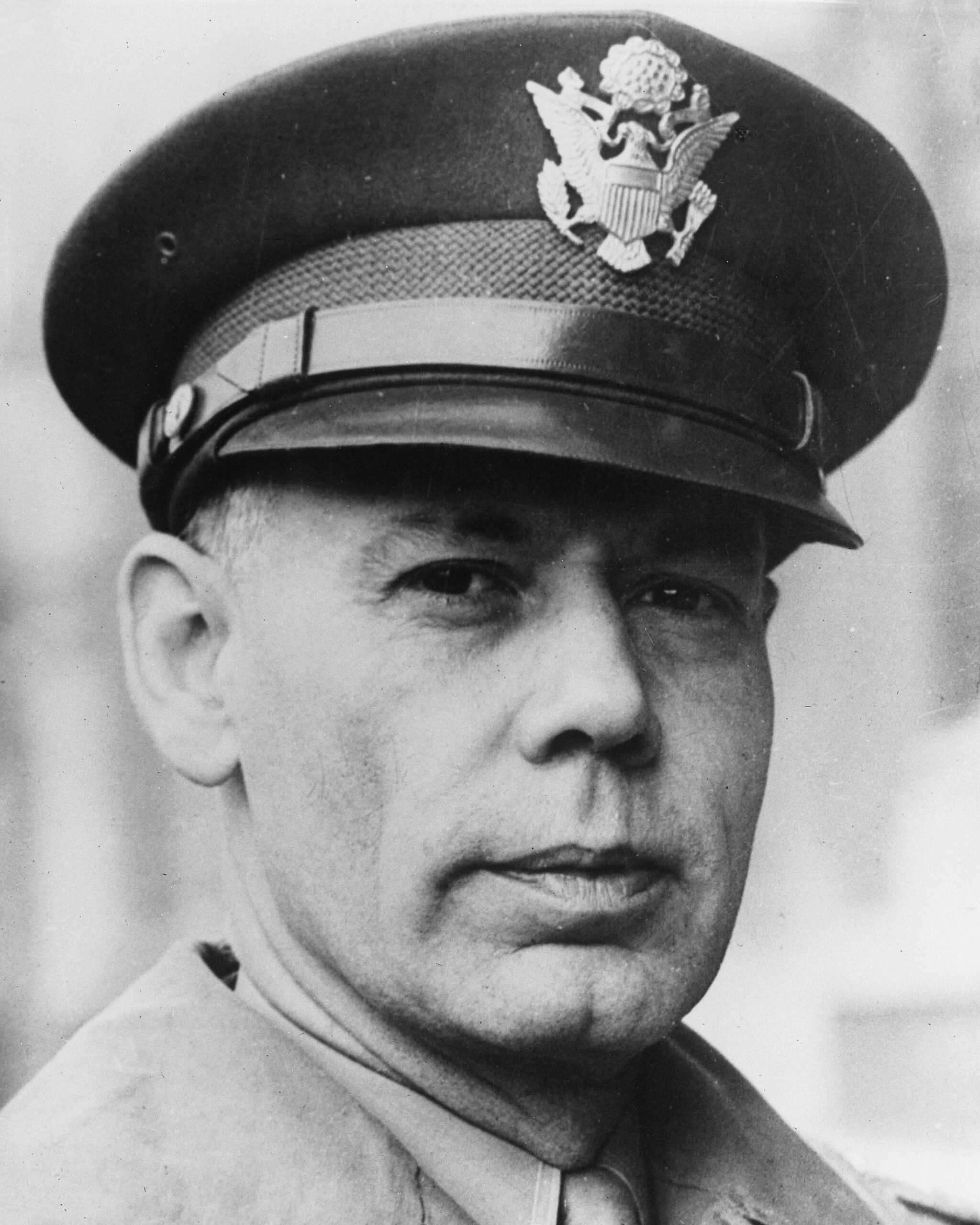
- Medals and/or stars: Army Distinguished Service Medal, Bronze Star/Major General/Two Stars
Walter Smith gained invaluable experience on the battlefields of France during World War I. Like some others on this list, he dedicated time between wars working to improve U.S. military capabilities, as the American armed forces had just recently become mechanized with increased aircraft involvement. Smith quickly caught the attention of General Bradley and General Marshall, reaching the rank of colonel just months before the attack on Pearl Harbor. Smith was primarily an administrative general, spending much of World War II as General Eisenhower’s chief of staff, frequently representing him at Allied high-command conferences.
Walton Walker (1889-1950)
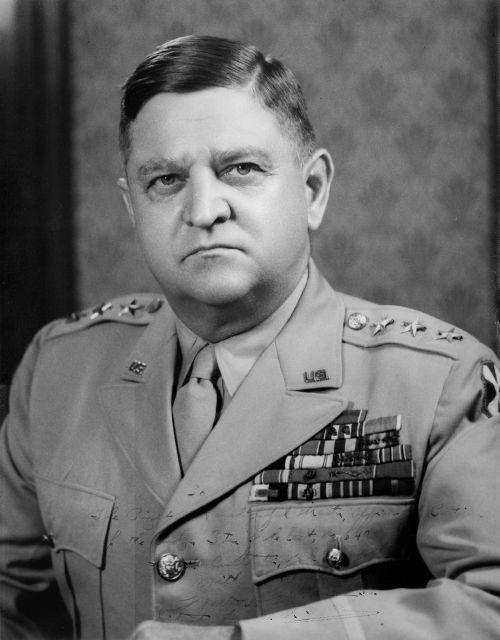
- Medals and/or stars: Distinguished Service Cross, Army Distinguished Service Medal, Distinguished Flying Cross, Silver Star, Bronze Star/Lieutenant General/Three Stars
Following his involvement in the occupation of Veracruz, Mexico, in 1914, and his service in World War I as a machine gunner in France, Walton Walker spent the time between the great wars as a military instructor in Oklahoma and Georgia, as well as at West Point before graduating from the Army War College in 1936. When the U.S. entered World War II, Walker assumed command of an infantry division, then an armored division, then a larger armored corps to prepare units for North African campaigns. Smith’s XX Corps later became part of Gen. Patton’s Third Army, and earned the nickname “Ghost Corps” because of how quickly they broke through Germany’s Siegfried Line of defense.
